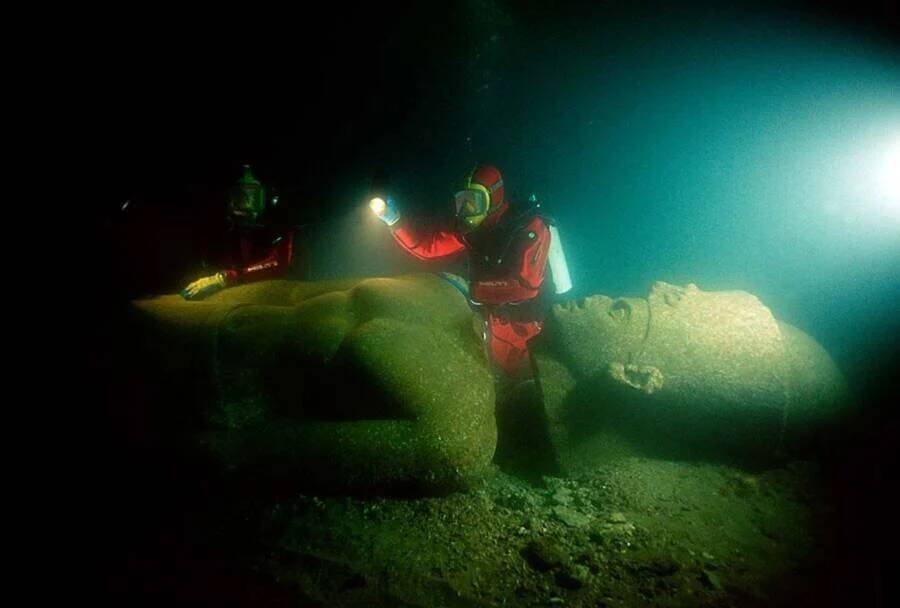Thonis-Heracleion, The Ancient Egyptian City That Vanished Into The Mediterranean

Christoph Gerigk/Franck Goddio/Hilti FoundationA statue found in the depths of Thonis-Heracleion.
For centuries, Thonis-Heracleion was something of a mystery. It was known as Thonis to the Egyptians and Heracleion to the Greeks, but neither were entirely sure if the city had existed at all.
Like many lost civilizations, Thonis-Heracleion was relegated to the realm of legend — that is, until the late 20th century, when divers uncovered evidence of the ancient city deep beneath the waves of the Mediterranean Sea.
After years of detailed seafloor mapping and excavations, researchers found the remains of the underwater city beneath a thick layer of sediment. They also discovered countless relics, statues, and treasures dating back to at least the eighth century B.C.E.
In the decades since, more about Thonis-Heracleion has been made clear. Historians now know that the ancient city was once a bustling port. However, many stories about the city are still hard to verify. For example, Herodotus claimed that Thonis-Heracleion was where Heracles first arrived in Egypt and where Paris and Helen of Troy visited before the Trojan War began. Of course, these descriptions of the city are still largely based on myth.
What historians have gleaned, however, is that as Alexandria grew more and more prominent, Thonis-Heracleion became less so. Natural disasters wreaked havoc on the city, eventually causing bits of it to fall into the sea, and by the eighth century C.E., it had completely vanished.
It wasn’t until the late 1990s and early 2000s that marine archaeologists were able to fully uncover the ruined, sunken city — but what they found was remarkable.





